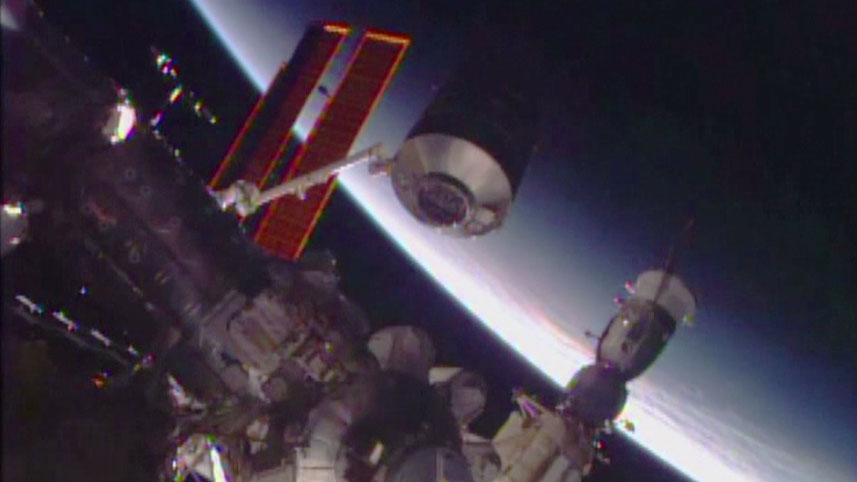Space Station Module Move Makes Room for Private Spaceships

Astronauts on the International Space Station moved a closet-like storage module to a new spot on the orbiting lab Wednesday (May 27) to make room for a new docking port to welcome private space taxis in 2017.
During an hours-long move, the station's bus-size Permanent Multipurpose Module rode a robotic arm to a new perch on the space station's Harmony connecting node. It was the first move for the module, which NASA calls the PMM, since its installation on the station's Unity node in 2011. You can see a video of the space module move here.
Early in the docking process, NASA astronaut Scott Kelly noted a warning message that was quickly cleared by NASA. "Except for that first little message there, it all looked perfect," Kelly said after the module move was finished.
NASA worked closely with controllers at the Canadian Space Agency in Quebec to move the module using a robotic arm. The work began at 4:45 a.m. EDT (2045 GMT), according to NASA, with the de-mating of the 14-foot-wide (4.3 meters) module taking place at 5:50 a.m. EDT. The module move was closely supervised by Kelly and fellow NASA astronaut Terry Virts, who commands the station's Expedition 43 crew.
The is just one in a series of steps to prime the International Space Station to receive crew flights on U.S.-built commercial spacecraft. Currently, the station's docking ports are designed to accommodate NASA's space shuttle fleet (which retired in 2011) and Russia's Soyuz space capsules, which now ferry all crews to space.
Boeing and SpaceX are creating new spacecraft that will begin sending astronauts aloft around 2017. Two docking adapters will fly into space aboard two SpaceX Dragon spacecraft this year; astronauts will install the adapters in a series of spacewalks.
NASA is shifting to commercial vehicles to reduce its reliance on Soyuz spacecraft, and regain a U.S. capability of launching astronauts into space.
Get the Space.com Newsletter
Breaking space news, the latest updates on rocket launches, skywatching events and more!
The PMM was first used to haul supplies from Earth while the space station was under construction. Then called "Leonardo," the Italian Space Agency's module flew eight times in space before the STS-133 crew left it behind in 2011 to dock to Unity.
Today, the module is used as a 2,400-cubic-foot (68 cubic meters) storage facility, able to hold 11 tons of equipment, or up to 16 racks, plus several storage bags.
Follow Elizabeth Howell @howellspace and us at @Spacedotcom. We're also on Facebook and Google+. Original article on Space.com.
Join our Space Forums to keep talking space on the latest missions, night sky and more! And if you have a news tip, correction or comment, let us know at: community@space.com.

Elizabeth Howell (she/her), Ph.D., was a staff writer in the spaceflight channel between 2022 and 2024 specializing in Canadian space news. She was contributing writer for Space.com for 10 years from 2012 to 2024. Elizabeth's reporting includes multiple exclusives with the White House, leading world coverage about a lost-and-found space tomato on the International Space Station, witnessing five human spaceflight launches on two continents, flying parabolic, working inside a spacesuit, and participating in a simulated Mars mission. Her latest book, "Why Am I Taller?" (ECW Press, 2022) is co-written with astronaut Dave Williams.









